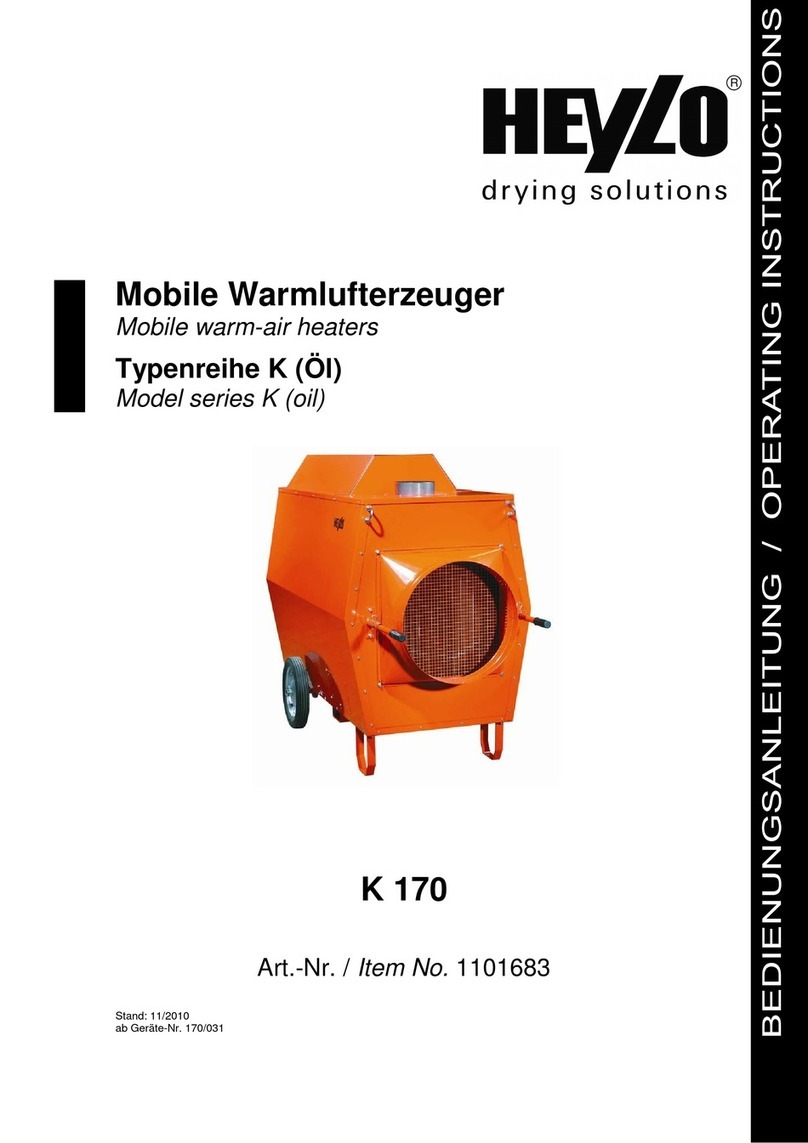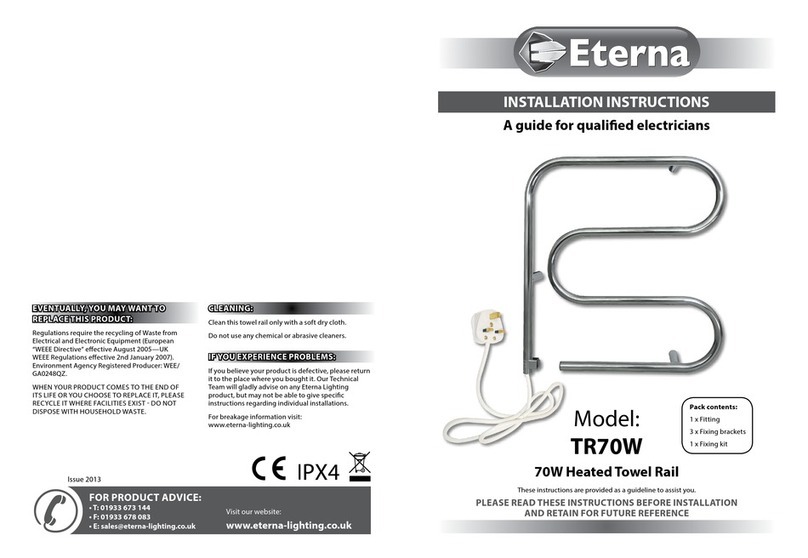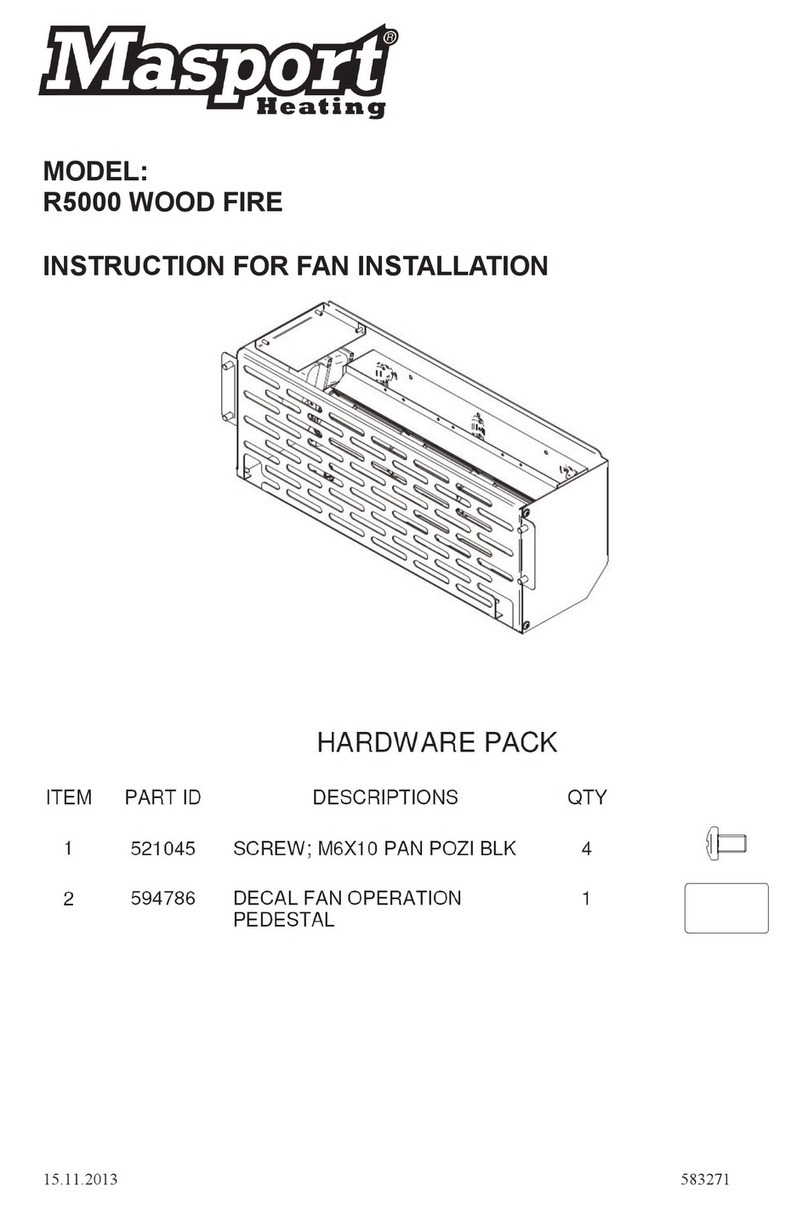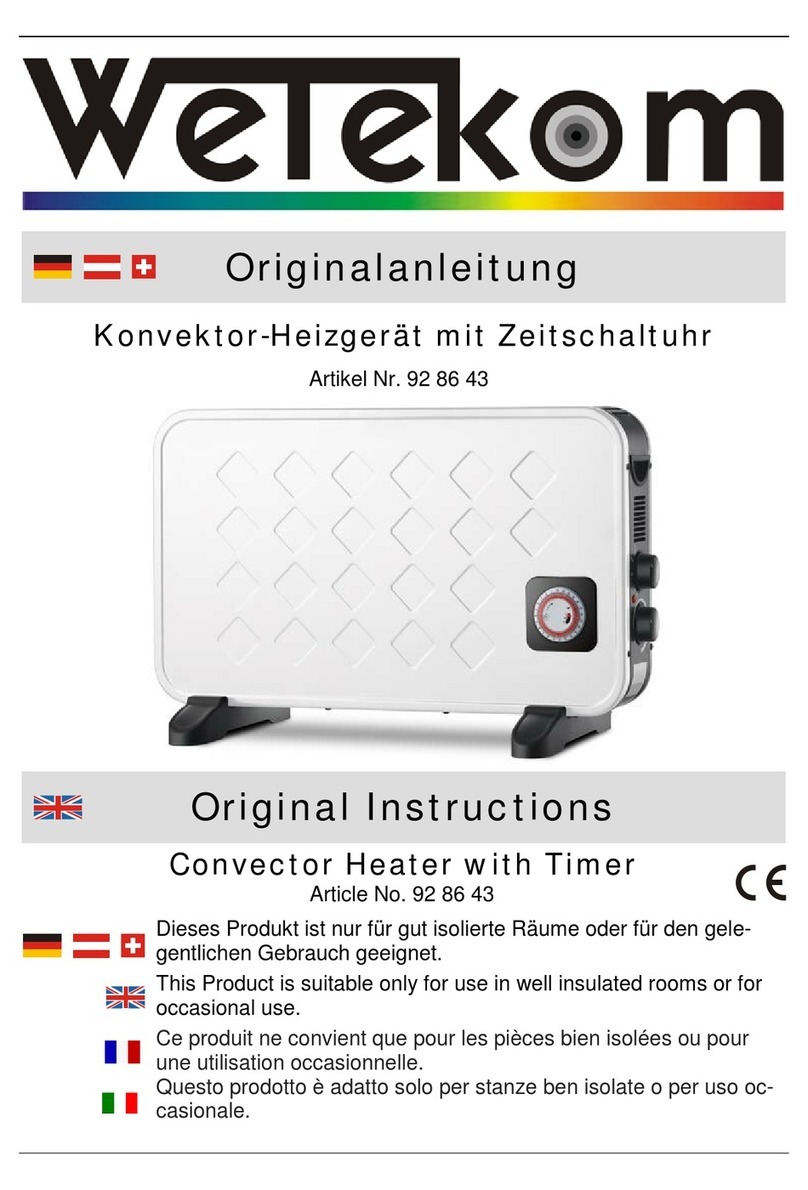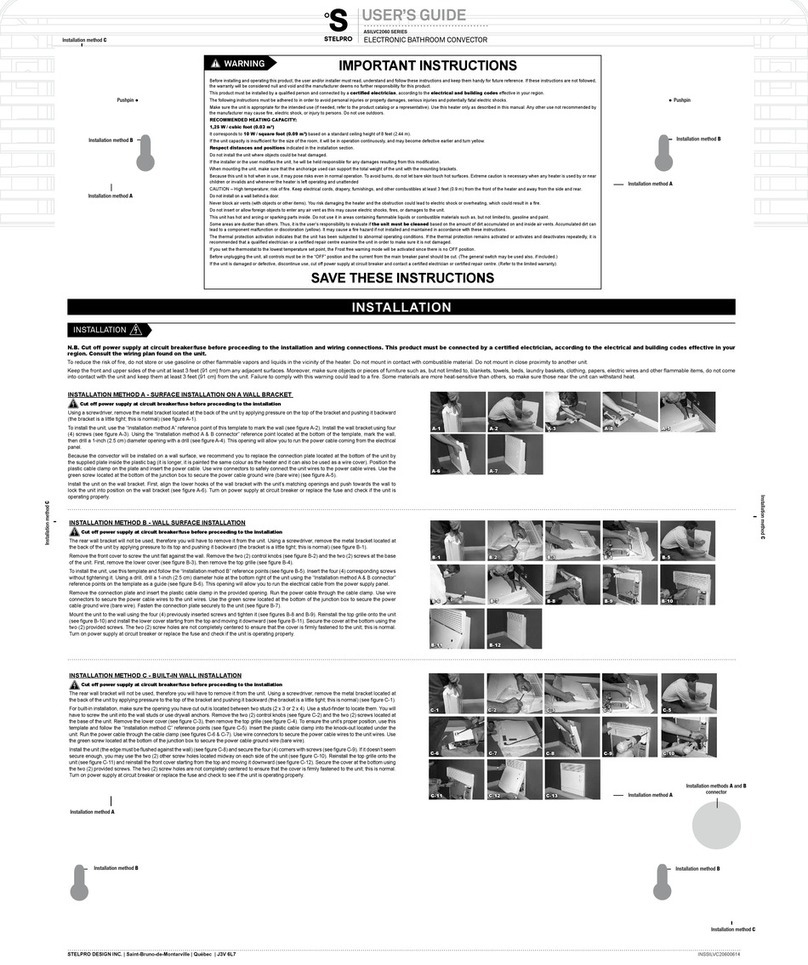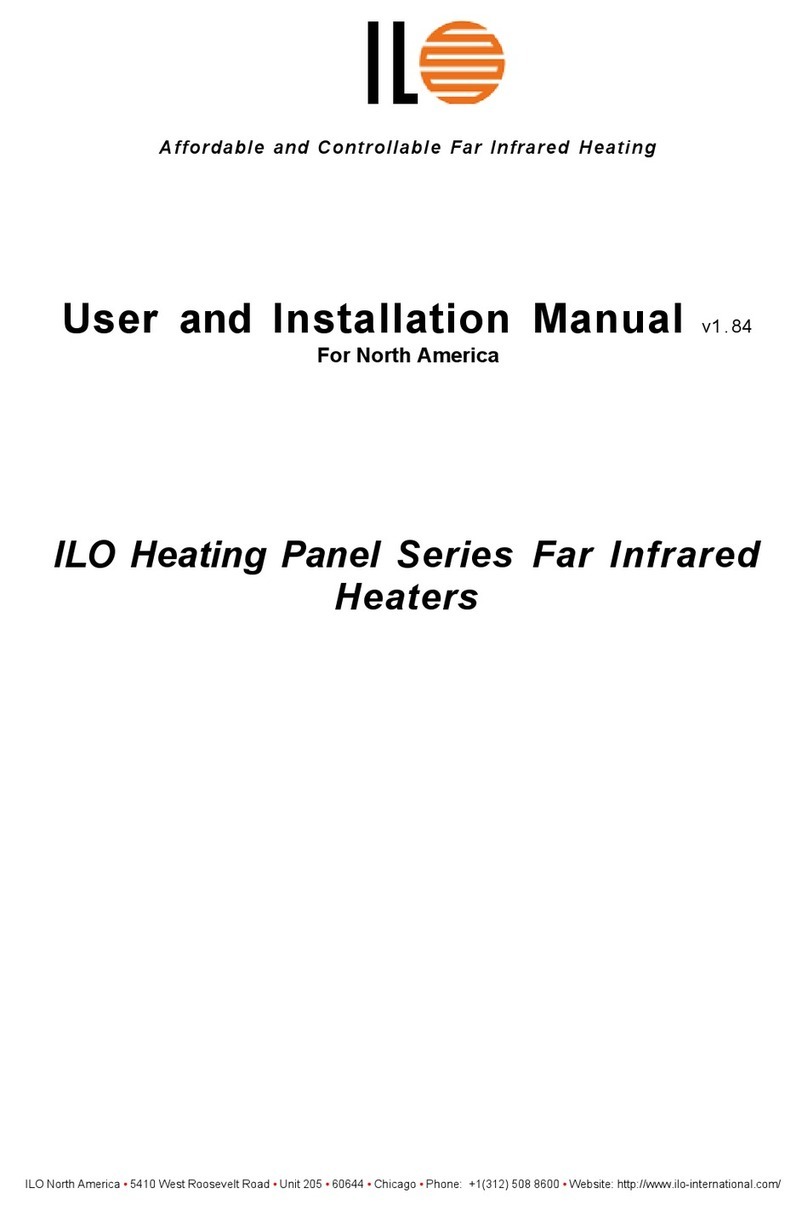Version 1.2 4
Maximum Heat Output
•
After establishing the fire and loading it with larger
pieces of wood, shut the air control in the door (slide
left) and leave the top air control open.
•
This setting will generate maximum heat output.
•
Do not overload firebox with fuel.
•
Note that this setting is not the most energy efficient as
some heat is lost up the flue instead of being
transferred into the room. However, once fire has
established, particulate emissions will be very low, i.e.
no smoke, which is good.
DO NOT OVER FIRE –It is possible to fire the stove beyond
its design capacity. This could damage the stove, so watch for
signs of over firing. If any part of the stove starts to glow red,
the stove is in an over fire situation and the controls should be
adjusted accordingly to reduce air intake. Never leave the
stove unattended for long periods without adjusting the
controls to a safe setting. Careful air supply control should be
exercised at all times.
Low Heat Output
•
The heat output of the appliance can be reduced by
having both air controls shut which will restrict the
oxygen supplied to the fire and slow down the rate at
which the wood burns.
•
This setting will provide the best energy efficiency as
the wood burns for longer. However, if not operated
correctly may result in higher particulate emissions.
•
Prior to closing the air slide ensure that the fire is
burning briskly. This may require opening the top air
slide fully for 5-10mins before shutting down.
•
The air slide can be adjusted to any position so desired
depending on wanted heat output versus burn time.
Reload with more wood
1)
Open air slide before opening door.
2)
Rake / break up any existing coals.
3)
Load the wood with the length orientated front to back.
4)
Better results will be achieved by loading several
smaller pieces of wood than one large piece.
5)
Close door with both air slides fully open, and leave for
minimum of 10 minutes to allow the fresh wood to
catch.
6)
After 10 or more minutes, shut the air slide in the door,
and adjust the top air slide to the desired heat output
setting.
Fuel Quality
Use wood with a moisture content of less than 20%. Logs
should not feel moist or damp, or have moss and fungal
growths.
Symptoms related to wet wood:
•
Difficulty starting and keeping a fire burning well.
•
Smoke and only small flames.
•
Dirty glass and/or fire bricks.
•
Rapid creosote build-up in the flue/chimney.
•
Low heat output.
•
Short burn times, and blue/grey smoke from the
flue/chimney outlet.
Run appliance at high heat output for a short period each day
to avoid large build-up of tars and creosote within the
appliance and flue.
Flue Draught
The flue has two main functions:
1)
To safely remove smoke, gases and fumes from the
appliance.
2)
To provide a sufficient amount of draught (suction) in
the appliance to ensure the fire keeps burning.
Draught is caused by the rising hot air in the flue when the fire
has been lit.
The position, height and size of the flue can affect the
performance of the flue draught. Refer to installation guide
for details on flue installation.
Factors affecting the flue draught include:
•
Insufficient flue height
•
Trees or other buildings nearby causing turbulence
•
High and gusty winds
•
Outside temperature and weather conditions








